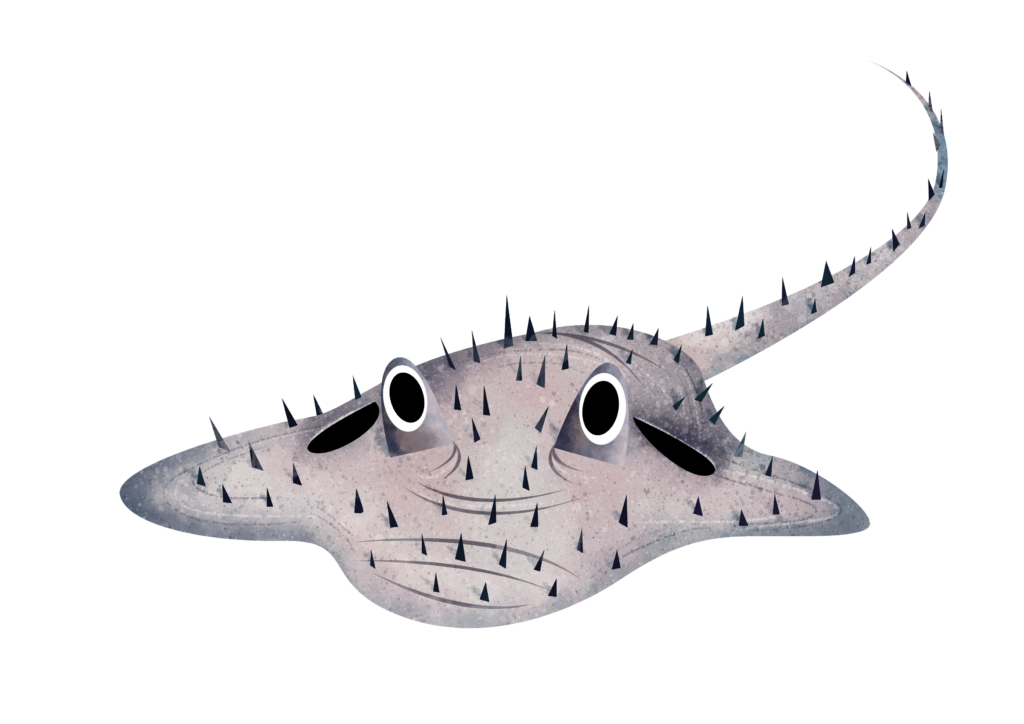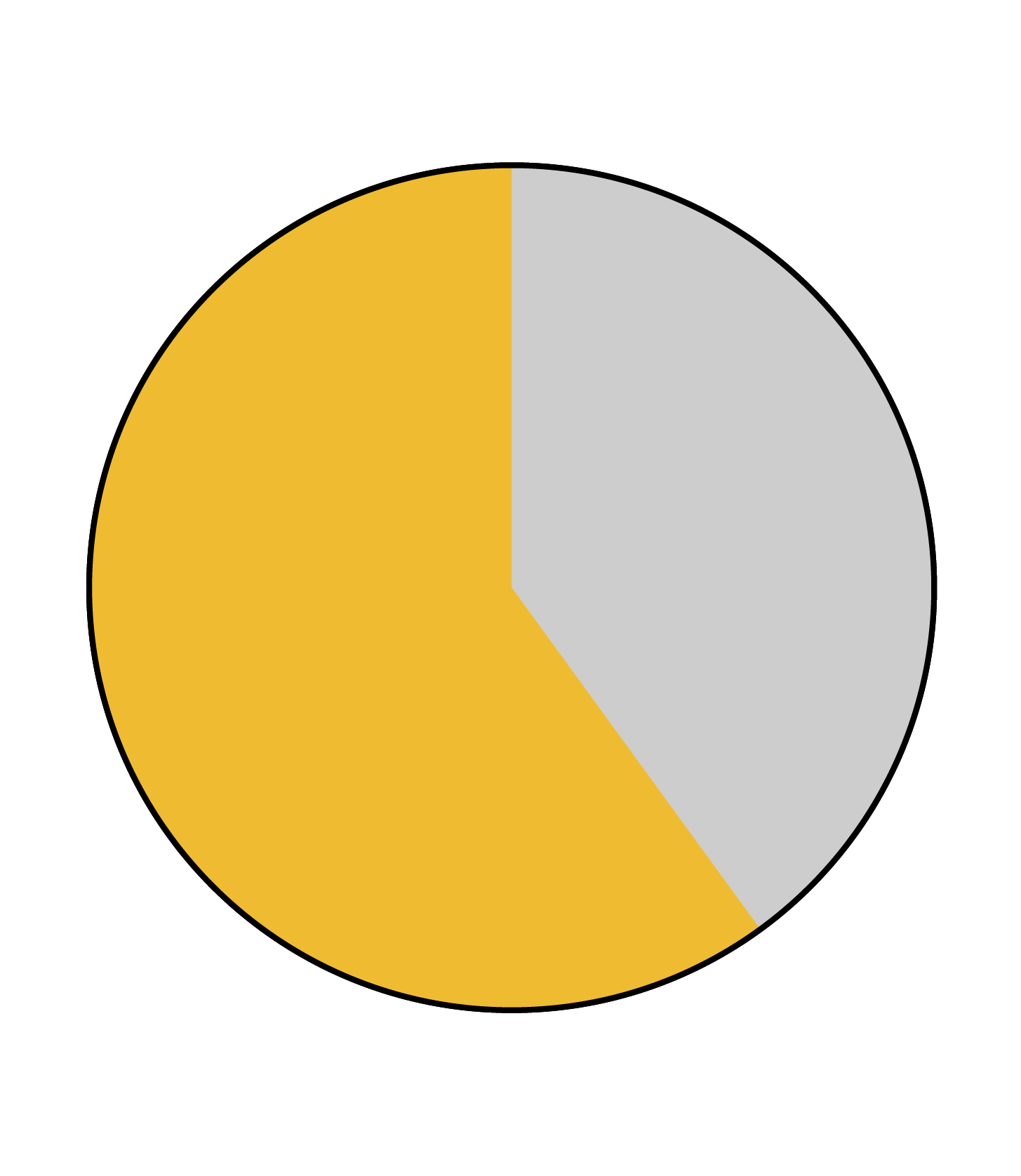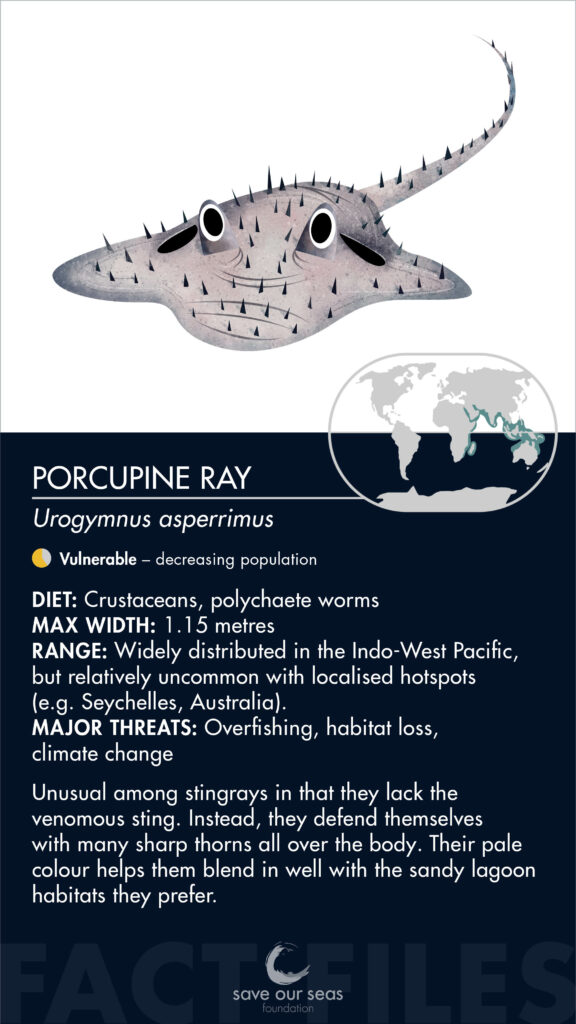Porcupine ray
Urogymnus asperrimus



Porcupine rays are unusual among stingrays in that they lack the venomous sting. Instead, their bodies are covered with many sharp thorns for defence. Their pale colour allows them to blend in with their sandy lagoon habitat.

Identification
Porcupine rays are most easily identified by the prickly thorns that cover their body and provide protection against predators. They have a rounded, oval shape and are usually pale grey in colour but can be a darker grey. Although they have the slender, whip-like tail of other stingrays, they don’t have venomous barbs.
Special behaviour
Since they feed on polychaete worms, porcupine rays can often be seen digging in soft sediment to find their prey, and are easily spotted by the plumes of cloudy sediment they create.
Reproduction
There is surprisingly limited information available on porcupine ray reproduction – we don’t really know when they mature, how long they live or how many pups they have. They are known to be ovoviviparous, however, meaning they grow their embryos internally and nourish them from a yolk sack before giving birth to live, independent young. From comparisons with similar ray species, it is thought that their life span is more than 21 years.
Habitat and geographical range
Porcupine rays are widely distributed in the Indo-West Pacific, but relatively uncommon with localised hotspots (e.g. Seychelles, Australia). They are primarily found in shallow coastal waters (<30 m), in mangrove habitats and sandy reef lagoons.

Diet
Porcupine rays have a particular preference for polychaete worms that burrow into the sand. As they reach adulthood, crustaceans form an increasing part of their diet, made easier as their crushing jaws and dentition mature.
Threats
Porcupine rays are mainly caught as bycatch in unregulated coastal fisheries, and they are highly valued in Indonesia for their thorny skin. However, they have become increasingly rare in catches, and in some areas (e.g. Gulf of Thailand) may even be locally extinct. They are also at risk of habitat loss due to the ongoing removal and modification of coastal habitat such as mangroves. In Australia, porcupine rays are also considered highly vulnerable to climate change, as their rarity and restricted habitat availability provides them little opportunity to adapt when suitable habitats shift or become unavailable. Data is sparse for this species, but it is estimated that population declines are more than 30% which, combined with their present rarity, has resulted in them being categorised as Vulnerable by the IUCN.
Relationship with humans
Although not typically a target species, porcupine rays are sought after in some fisheries, including Indonesia where their thorny skin is considered highly valuable. They are also used for their meat, and are sometimes sought by traditional hunters in northern Australia. While they do not possess a sting, their thorns are highly abrasive and can cause injury if handled.
Fun facts:
Porcupine rays get their name from the spiky thorns that cover their back and provide armour against potential predators.
Despite being a stingray, porcupine rays don’t have venomous barbs.
Leather made from their thorny skin is particularly sought after in Indonesia.
References
Peter Last, et al, 2016, Rays of the World.
Oceana, Porcupine Ray
IUCN, 2021, Porcupine Ray: Urogymnus asperrimus





